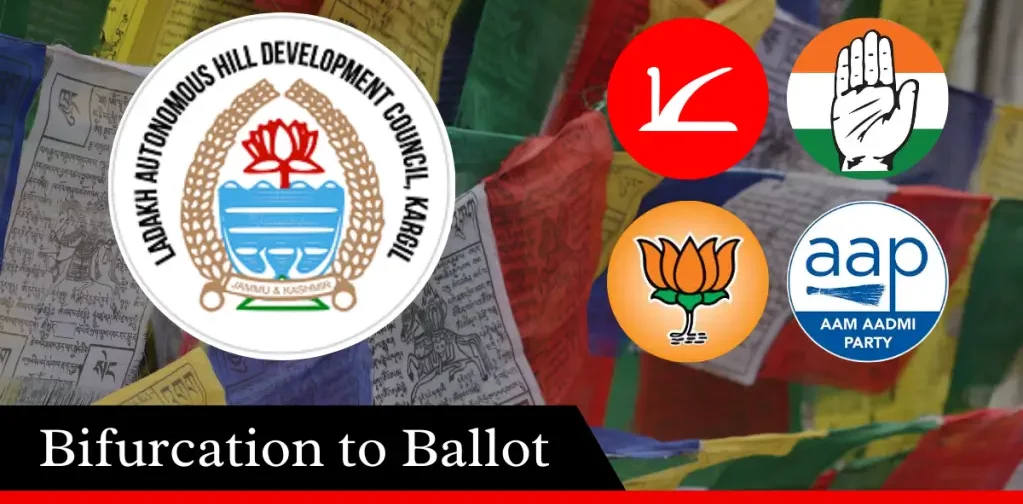
- Home
- About
- Knowledge Center
- Legislative Landscape
- Resources
- #TOGETHERFORBHARA
On August 5, 2019, the state of Jammu and Kashmir (JK) was bifurcated into two distinct Union Territories (UT), namely Jammu & Kashmir and Ladakh. Four years following the establishment of Ladakh as a separate Union Territory, elections were conducted for the first time in the Ladakh Hill Development Council – Kargil (LAHDC-Kargil), which comprises a total of 30 seats. The administration directly nominated four councilors with voting rights, while elections were held for the remaining 26 seats. Voting for these seats took place on October 4, and the results were officially announced on October 8. There were a total of 85 candidates contesting for these positions, and the voter turnout reached 78%, marking an 8% increase compared to the previous council elections in 2018. Among the 26 seats, 23 were dominated by Muslim communities, while the remaining 3 were predominantly Buddhist.
This election held significant importance for the INDIA Alliance, being the first election since its formation. The Indian National Congress (INC) fielded 22 candidates, while the National Conference presented 17 candidates. Mehbooba Mufti’s Peoples Democratic Party (PDP) chose not to participate in this election. The BJP and AAP contested on 17 and 4 seats, respectively.
The abrogation of Article 370 was a demand strongly supported by the Buddhist majority in the Leh region and Jammu. Conversely, the Muslim majority region of Kargil rejected the abrogation of Article 370, and this is where the NC-INC alliance performed well. The BJP saw gains in the areas adjoining the Buddhist-dominated constituencies of Kargil.

(Source: ECI Website)
In this election, the NC-INC alliance emerged victorious by securing 12 and 10 seats respectively. The “friendly fight” between National Conference and Congress cost them a loss of one seat to the BJP. With the split in votes between NC and Congress, the BJP was able to manage a win by a narrow margin of 177 votes in the Stakchay Khangral constituency. Due to this, BJP won 2 seats. Although the BJP increased its previous tally by one seat, they did not achieve significant success in this region following the abrogation of Article 370.
Previous elections were held in 2018, where the National Conference and Congress won 10 and 8 seats respectively. PDP and BJP also won two and one seats respectively in 2018. 5 independent candidates were also elected as councilors. Later on the two councilors of the PDP were shifted to BJP, making their tally to three.
Rahul Gandhi of the Congress toured this region before the latest elections. Ladakh served as the final point for the prestigious “Bharat Jodo Yatra”, both of which contributed to the party’s success in the region. On the other hand, BJP’s Minakshi Lekhi and Tarun Chugh campaigned for the BJP but failed to make a substantial impact on the election results. While the election results provided a morale boost for the INDIA Alliance; looking at the electoral history of the Kargil region, the results seem to be no surprise for the BJP-led NDA.
